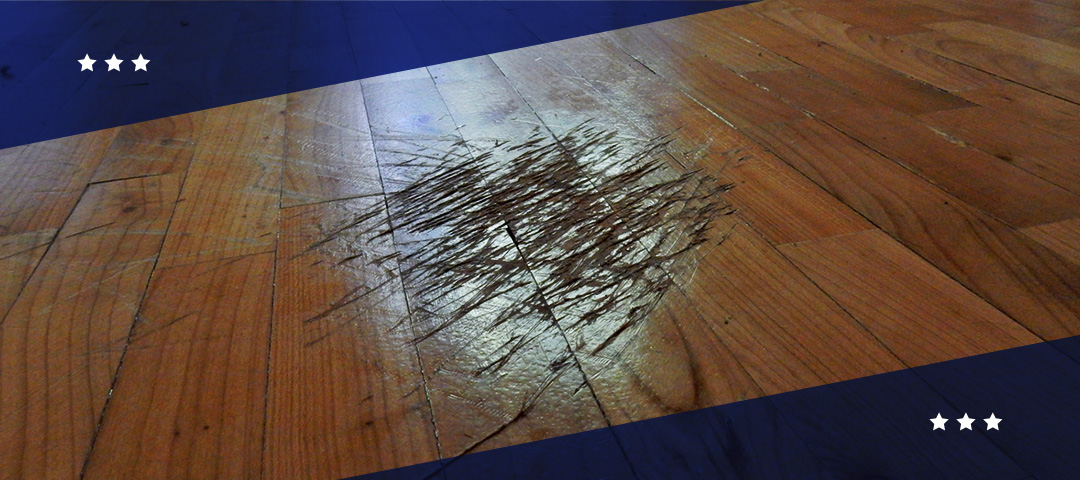4 Common Types of Floor Damage and How to Fix Them
- Published By: District Floor Depot

If you notice damage to your floors, you can use a home remedy to restore their ideal appearance. Follow these simple tips and tricks to learn how to fix floor defects in cost-effective ways.
1. Floor Stains
Spills, dirt, grease, and grime can discolor and damage your hardwood floor. For the best stain prevention in the future, be sure to clean up the floors immediately because the liquid can create moisture and the hardwood floors will have a negative reaction. For best results, use a cleaner designed specifically for hardwood floors.
Maintain your floors. Over time the hardwood floors will more easily absorb stains as the finish wears off. Every 8-10 years is the average time period to refinish hardwood floors, which varies based on foot traffic from your active lifestyle or from kids and pets.
2. Floor Scratches
Heavy furniture and sharp tools may cause marks or lines on your flooring. The rough edges may provide an unsafe surface to walk on or allow moisture to accumulate, causing additional damage. You can restore your floor by polishing the surface with an epoxy or resin sealer. Prevent this type of damage in the future by lifting heavy objects and keeping tools away from the flooring as much as possible.
3. Hardwood Flooring Cracks
Heavy impacts or improper underlayment from an installation may cause cracks, holes or pits to develop in your hardwood floor. Additionally, acidic cleaners may weaken the structure and cause damage. Epoxy, wood putty, and resin come in various pigments, allowing you to repair cracks. After restoring your floor’s seamless surface, you can maintain its integrity with a protective finish.
4. Wood Flooring Gaps
Changing humidity levels and weather can cause wood boards to expand and contract. You can apply wood strips to wide gaps with wood glue and a hammer or mallet. Staining and sanding the strips will create a smooth, cohesive finish.
Another common hardwood flooring repair for this issue is to apply wood putty in the same color as your floorboards and remove any excess with a cloth. Prevent gaps by acclimating your materials, ensuring proper alignment and installing new floors when there’s moderate humidity.
When Do You Need New Floors?
Some damage from moisture or temperatures is challenging to fix and may require costly repairs. For example, if your wood flooring changes shape with warping or buckling, the material won’t return to its ideal form. In these cases, you would need to replace the flooring to achieve a safe and stylish surface.
District Floor Depot Offers Effective Flooring Solutions
At District Floor Depot, our shop provides everything you need to take care of your floors at home. If you’d like to ensure proper protection and maintain a stylish appearance you love, our professionals can restore, refinish and install floors for you.
To get started on a project, schedule a consultation today!
